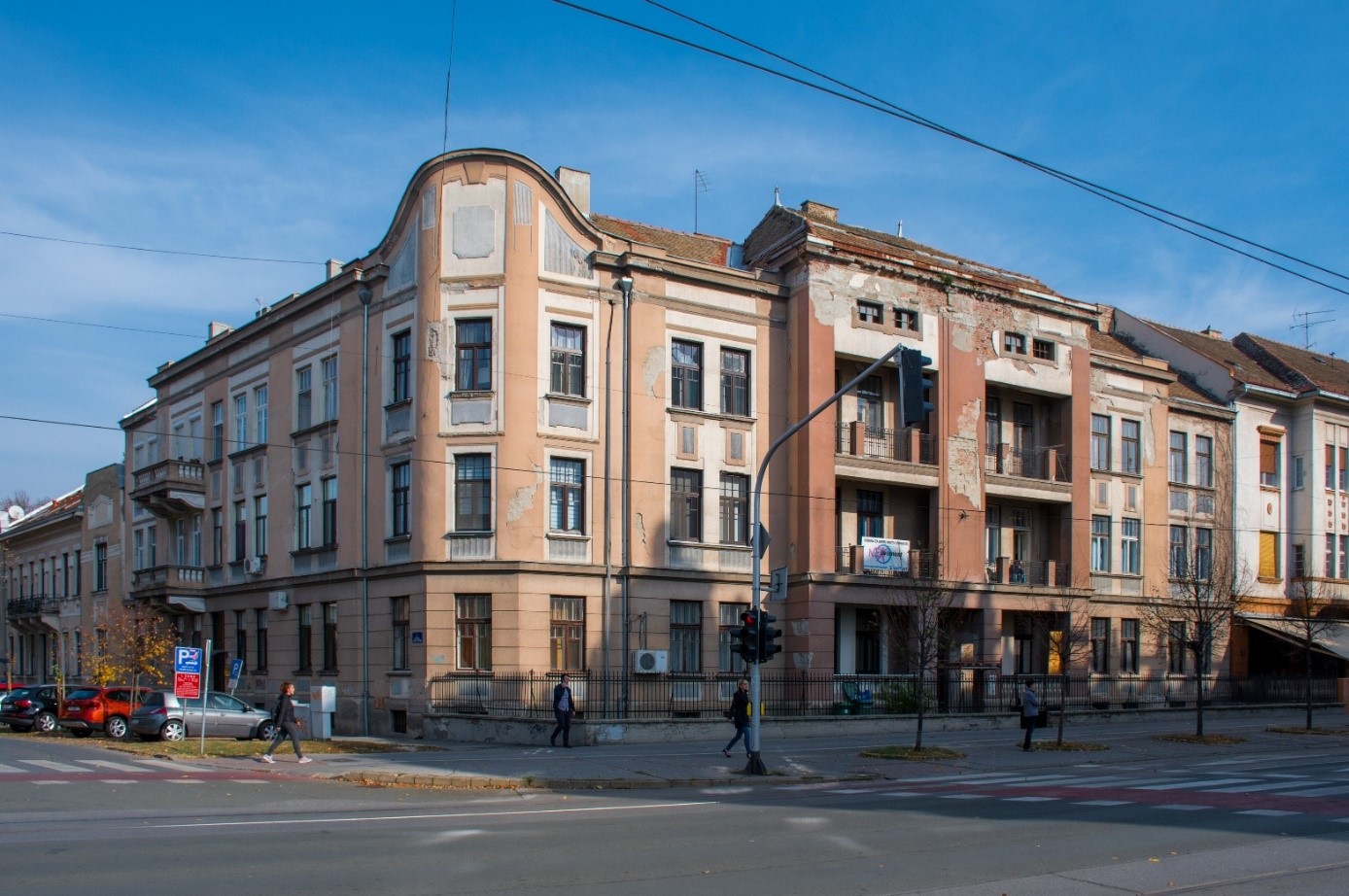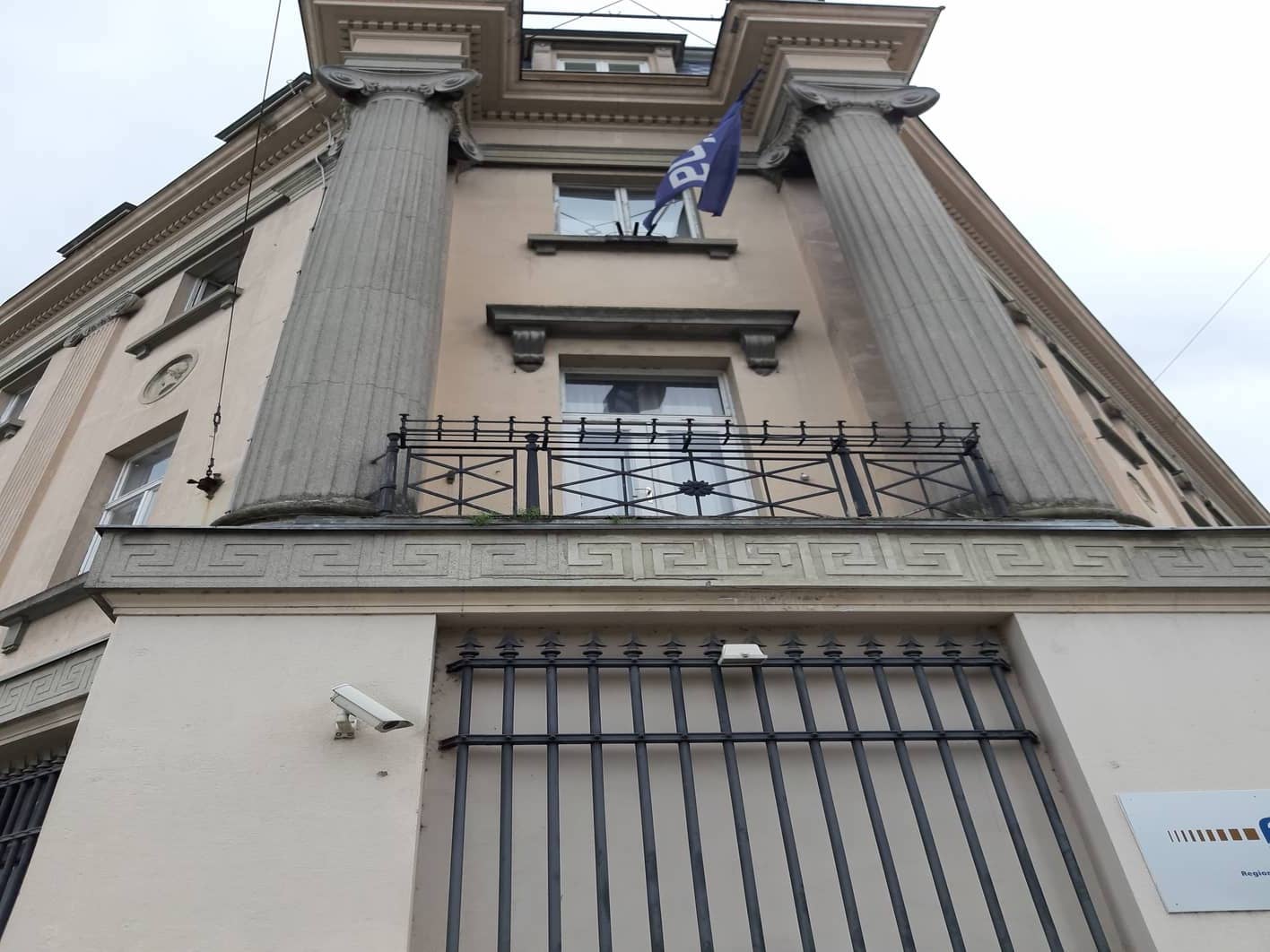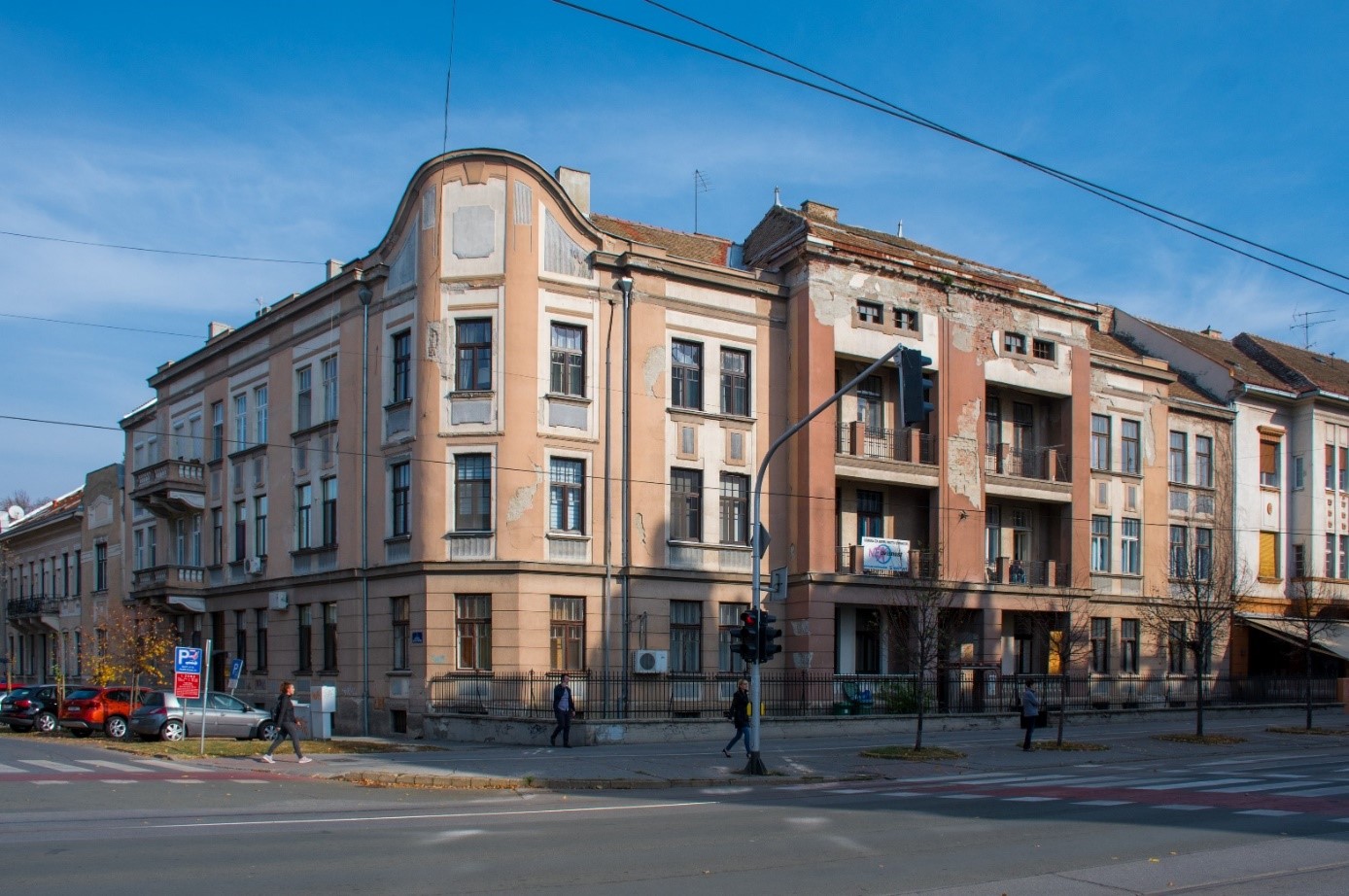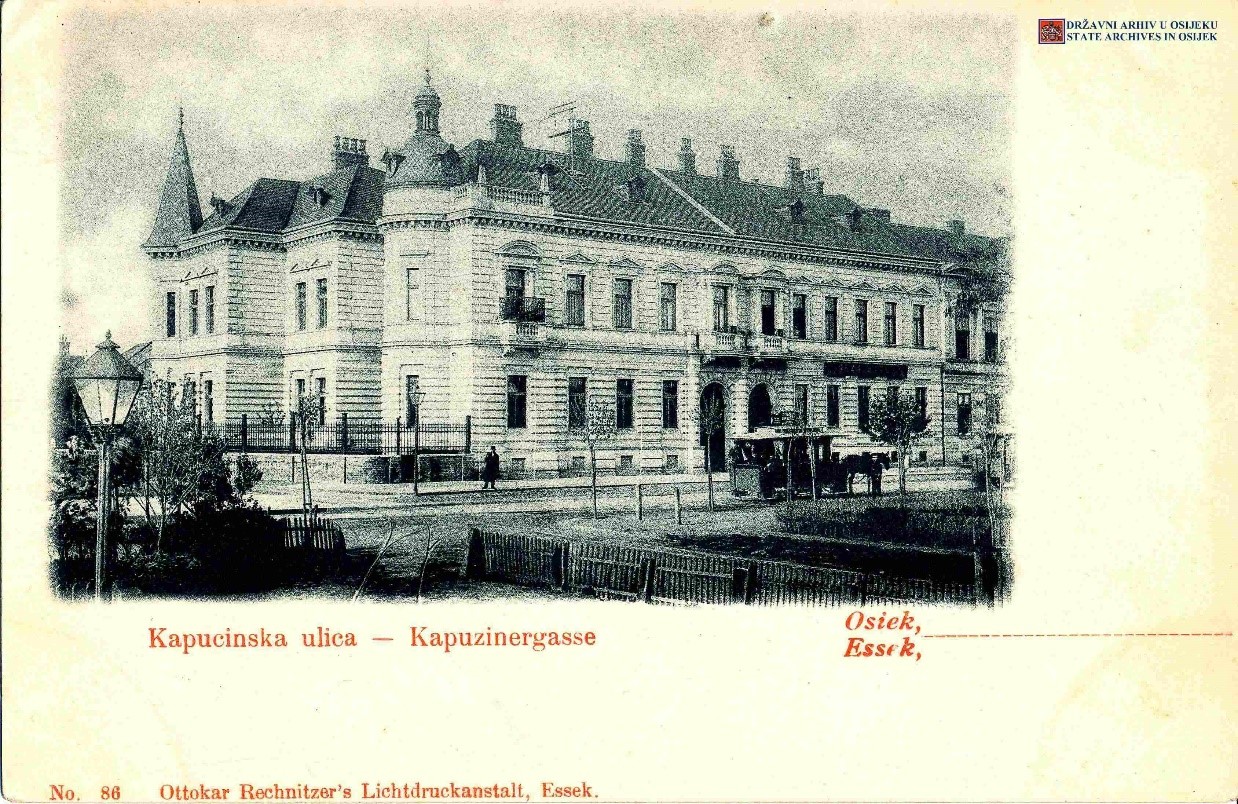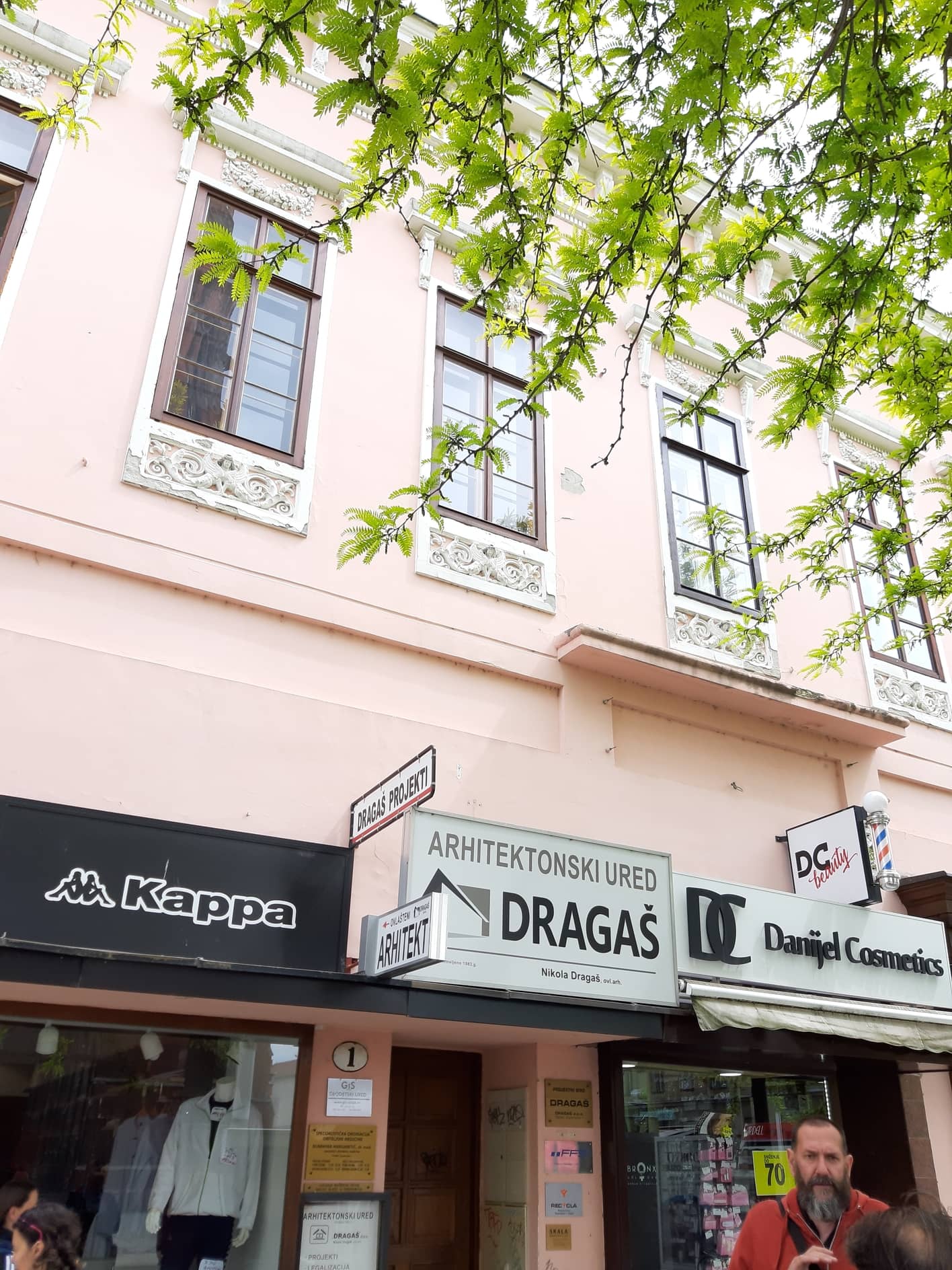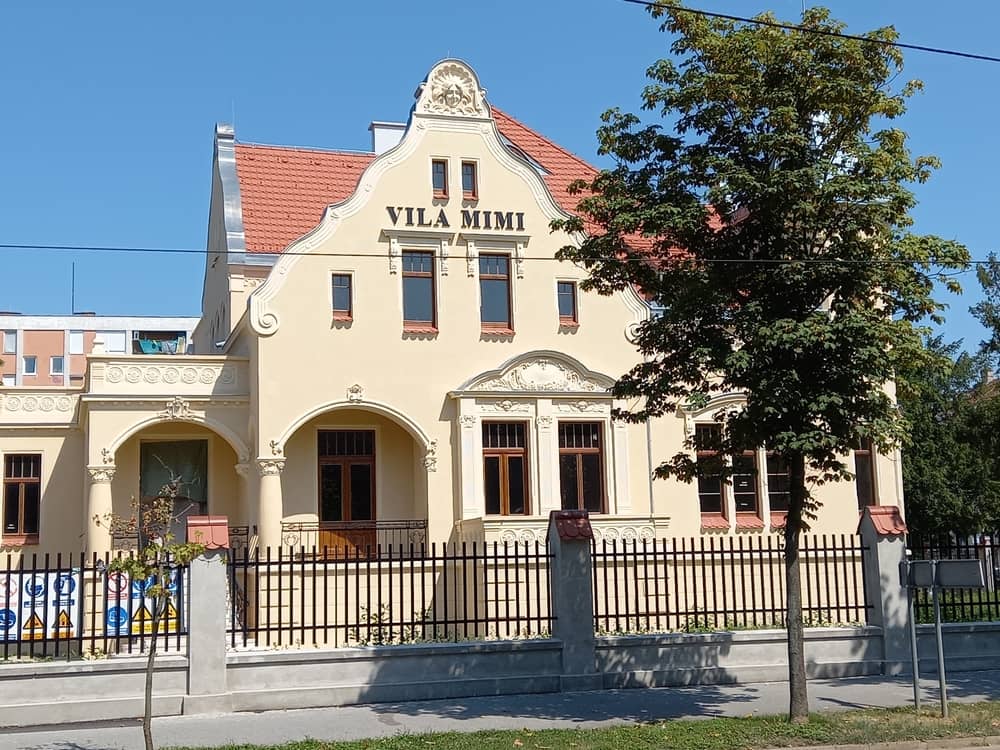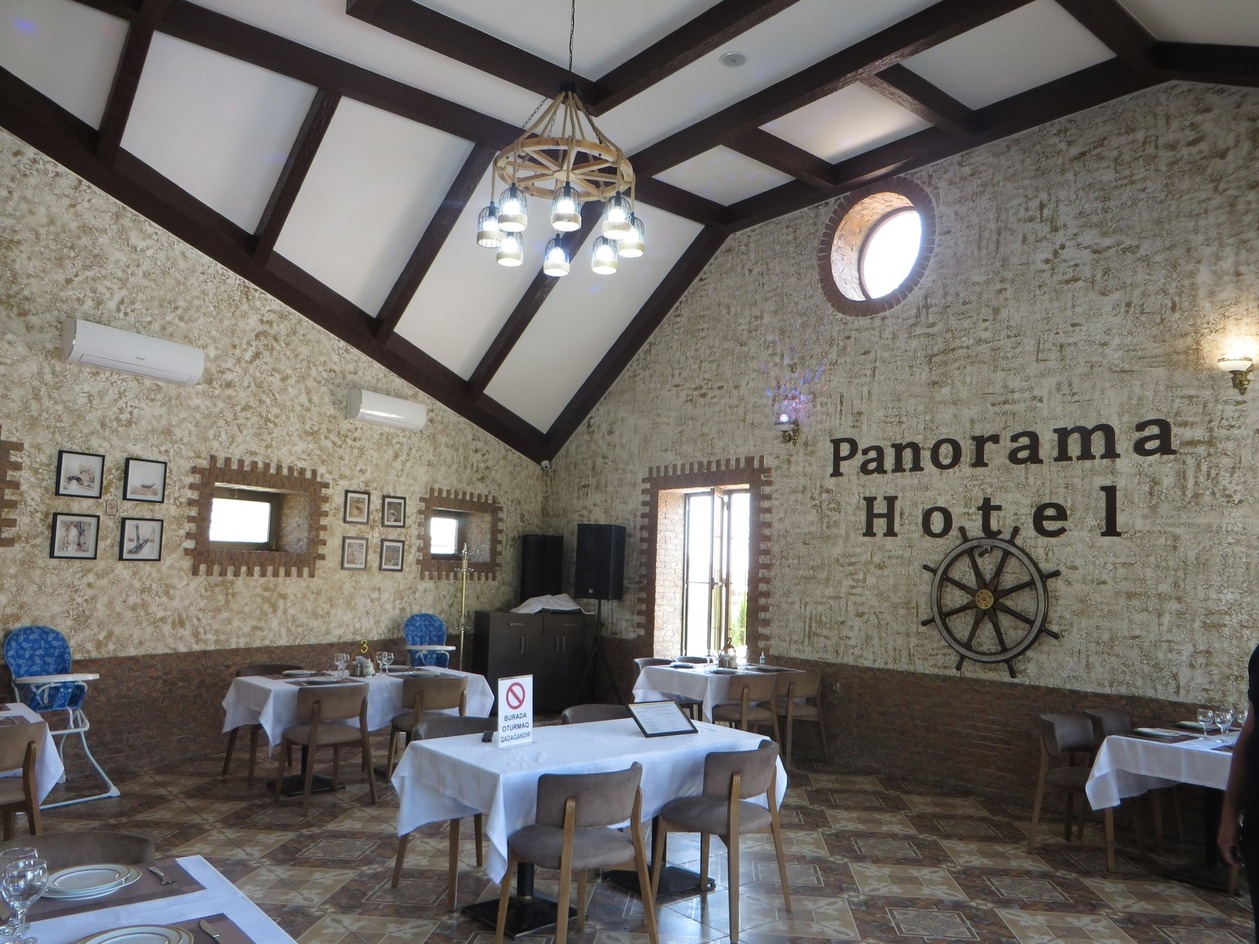A three-storey corner house of Alfred Kästenbaum-Korsky, PhD, an attorney-at-law, was built in 1913, according to the main design of Viktor Beneš, an architect from Prague. The Kästenbaums (the Korskys since 1913)were a very prominent and wealthy Osijek Jewish family.
Archives: Directory listings
Directory listings
Weiszmayer, Sorger & Comp. Bank / Croatian Financial Agency
The house was designed by the Viennese architect Heinrich Adam in 1896. This, once representative, Neo-Baroque and Historicist building consisted of Winter’s law office and 2 flats. From the then archival cadastral documents it is evident that the house was equally owned by Wilim and his wifw, Julija, born Ungar, who intensly engaged in humanitarian work.
Mavro Rein’s House
The house of the eminent Osijek Rein family – lawyer Mavro Rein, PhD, and his son Ivan, a very important Osijek and Paris painter, whose rich opus was interrupted by his death in World War II.
Julius Pfeiffer House
A large house in Historicism style in the city centre, situated diagonally across the crossroads from famous Osijek Secession sequence of representative houses and villas.
Miskolczy Family House / Adult Education Centre
The building in the city centre used to belong to the Miskolczy family of very prominent OsijekJewish merchants and industrialists. A public Adult Education Centre is situated there now. The family also owned the house at 3 Županijska (County) Street, one of the most prestigeous Upper Town locations.
Union Steam Mill and Manager’s Villa
One of the rare Osijek Secession villas, built in 1906 according to the design of the Osijek builder Otto Struppi as a villa for Union steam mill’s director. After the First World War, it changed its owners and became a renowned Bathory-Weissmann sanatorium, having kept its hospital function until recently. Now it has been reconstructed to its initial beauty.
Panorama Hotel
With garden views, Panorama Hotel Oghuz is located in Oghuz and has a restaurant, a 24-hour front desk, bar, garden, barbecue and terrace. Free WiFi is available throughout the property.
Madrid Bar
Art of bartending in the heart of Baku. We have the best bartenders, tasty mixes, good vibes, very special music & touch of Spain!
Hard Rock Café
Legendary American flavors in the heart of Baku. First come-first serve.
Cafe City
On 21 September 2009, the first branch of the CafeCity network brand solemnly opened its doors in the very centre of our capital. From year to year, trying to win your love and trust, loyalty and positive attitude, we have been working hard with each segment of the service we provide, improving the quality of work and taking into account all your feedback and suggestions.
